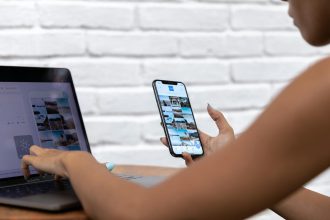## Outline Generation
Protecting Your Digital Footprint: Preparing Your Phone for Public Gatherings
Why Your Phone Needs Protection at Protests
Attending a public demonstration or even observing one can be a powerful experience. However, it’s crucial to acknowledge that your smartphone, a ubiquitous tool in modern life, can inadvertently expose you to digital surveillance by law enforcement. If your device is active and unsecured, your movements can be tracked, and your communications intercepted. This article will guide you through essential steps to prepare your phone for public gatherings, ensuring your digital privacy is better protected.
Understanding the Digital Risks
In environments where heightened security is a concern, understanding the potential digital threats is the first step toward mitigation. Your phone, by its very nature, collects and transmits a wealth of data that can be exploited.
Location Tracking
Cell towers triangulate your position, and GPS data, when enabled, provides precise location information. This data can be logged and accessed by authorities, creating a detailed record of your whereabouts.
Surveillance and Data Collection
Law enforcement agencies may employ various methods to collect data from individuals present at a gathering. This can include IMSI catchers (stingrays) that mimic cell towers to intercept communications and location data, and even direct access to app data if permissions are overly broad.
Network Monitoring
Even without sophisticated tools, your network traffic can be monitored. Unencrypted messages and browsing history can reveal your activities and associations.
Essential Steps for Phone Security
Taking proactive measures before you head out can significantly reduce your digital vulnerability. Think of these as digital safety precautions.
Pre-Gathering Checks
A little preparation goes a long way in safeguarding your data.
Update Your Software
Ensure your operating system and all applications are updated to their latest versions. Updates often include critical security patches that close known vulnerabilities.
Secure with Passcode or Biometrics
Never leave your phone unlocked. Use a strong, unique passcode, or enable fingerprint or facial recognition. This is your first line of defense.
Review App Permissions
Go through your installed apps and revoke any unnecessary permissions, especially those related to location, microphone, and camera access. An app doesn’t need constant access to your location if it’s a simple game.
Disable Location Services
For maximum privacy, consider turning off location services entirely before attending a protest. You can always re-enable them later when needed.
During the Gathering
Once you’re in the midst of the event, further precautions can be taken.
Consider Airplane Mode
If you don’t need to communicate, switching to airplane mode will disconnect your phone from cellular and Wi-Fi networks, preventing tracking and interception. You can selectively re-enable Wi-Fi or Bluetooth if necessary for specific, secure communication apps.
Limit Unencrypted Communication
Avoid sending sensitive information via standard SMS or unencrypted messaging apps. If you must communicate, use end-to-end encrypted messaging services like Signal or WhatsApp.
Avoid Public Wi-Fi
Public Wi-Fi networks are often unsecured and can be used to snoop on your activity. Stick to your cellular data or a trusted VPN if you need internet access.
Post-Gathering Actions
Your digital vigilance shouldn’t end when the protest does.
Check for Unusual Activity
After the event, review your phone’s battery usage and data consumption for any anomalies that might indicate unauthorized access or background activity.
Delete Sensitive Data
Consider deleting photos, videos, or messages that could be incriminating or sensitive, especially if you’ve captured content that might be of interest to authorities.
Advanced Privacy Tips
For those seeking an extra layer of protection, consider these advanced strategies:
- Use a Burner Phone: For high-risk situations, a cheap, prepaid phone used solely for the event can be a viable option.
- Encrypt Your Device: Most modern smartphones offer full disk encryption. Ensure this is enabled.
- Consider a VPN: A Virtual Private Network can encrypt your internet traffic, masking your IP address and making it harder to track your online activity.
- Limit Social Media Sharing: Be mindful of what you post and when. Geotagging photos can be particularly risky.
For more in-depth information on digital security and privacy, resources like the Electronic Frontier Foundation (EFF) offer comprehensive guides and tools.
Conclusion
Preparing your phone for a protest is not about paranoia; it’s about informed digital self-defense. By understanding the potential risks and implementing these practical steps, you can significantly enhance your privacy and security. Remember, a little foresight can make a big difference in protecting your digital footprint.
Ready to take control of your digital privacy? Start by reviewing your app permissions today!
### Suggested URL Slug
`phone-protest-security`
### SEO Title
`Phone Protest Security: 7 Ways to Protect Your Data`
### Full Article Body
(See the HTML structure above for the full article body, including H1, H2, H3, H4, and paragraph content.)
### Excerpt
Attending a public demonstration? Learn essential steps to prepare your phone for protests and protect your digital privacy from surveillance. Discover how to secure your device and safeguard your data.
### Image search value for featured image
`smartphone security protest gathering privacy protection`
Featured image provided by Pexels — photo by SHVETS production








